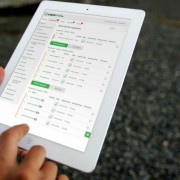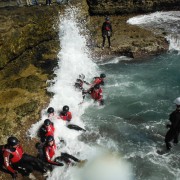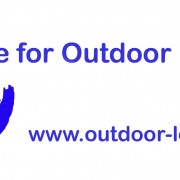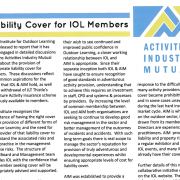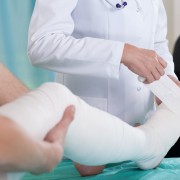Defending a Personal Injury Claim
What Evidence Would You Need To Provide?
By Ben Scholes
If you were to face a personal injury or civil litigation claim following an incident at your centre, how easily would you be able to provide all the evidence required to successful defend the claim? We all know that defending a claim can have severe financial and personal consequences for anyone working in adventure activities. Your organisation may well operate to impeccable safety standards and employ qualified, experienced staff. But in many cases, your ability to successfully defend a claim will depend on your ability to provide evidence to prove that:
- Your staff are competent and have had the necessary training and guidance to be able to carry out their job safely
- Inspections of equipment, installations and facilities have been carried out on a regular, systematic basis – with appropriate action taken as a result
- Activities have been carried out in accordance with industry standards
Together with your completed accident report, witness statements, signed customer risk acknowledgment and photographs from the day – your equipment inspection records, staff training documents and risk assessments will form a vital part of evidence you need to provide to your insurance company.
The problem with paper records
As outdoor professionals ourselves, Rob Walker and I knew only too well the problems associated with using paper records for Health and Safety record keeping – paper gets wet, can be destroyed by fire, and consumes a lot of space.
We looked around for a suitable alternative but found nothing. Some organisations were dabbling with spreadsheets, but these were prone to user error and lacked accountability.
Frustrated but determined that there had to be a better way, we set out to create a new robust online safety management system designed to help protect outdoor operators, their staff and customers from avoidable risk.
The result, we believe, is an affordable, easy-to-use system which is already home to 95,000 records and trusted by clients including AIM members the Castle Climbing Centre, the Venture Trust and Low Mill Outdoor Centre among many others.
Here are just three key areas of the Papertrail.io system which make it easy to provide the necessary evidence required in the event of a claim:
Equipment Inspection Records
The system makes it easy to prove that inspections of PPE, installations and other equipment have been undertaken systematically, by a competent person and that any necessary actions (such as repairing, retiring or quarantining items) have been carried out.
By recording all your equipment in your Papertrail account and setting inspection frequencies, your team will be reminded when inspections are due. All inspections are logged and because each user has their own unique log-in, there’s complete transparency and accountability throughout. Detailed notes and photographs can be added to equipment inspections, allowing anyone to see the history of an item from first use.
Risk Assessments
Defending a claim will invariably mean demonstrating that you have adequate risk control measures in place. It’s not enough to have risk assessments and leave them in the back of a filing cabinet. You will need to be able to provide evidence that they have been reviewed, updated and action taken as necessary.
By uploading your risk assessment documents to your account and setting inspection frequencies, you can ensure that regular reviews are carried out, documented and version controlled with a permanent time stamp.
Staff Documents
With instructor error one of the most common factors cited in claims in the outdoors, being able to demonstrate staff competence is of vital importance. Staff training records, certificates and handbooks can all be added to your account, ensuring you have a permanent record. Again, reminders can be set-up to ensure notifications are received when renewals or updates are due, and periodic observations, training sessions and other updates can all be recorded in your account.
All data is backed up four times daily and partnership with the best technology providers in the industry ensures ultimate safety, reliability and security.
We know that working in adventure activities has its own set of challenges as well as immense rewards. Our at goal at Papertrail is to remove some of the stress and anxiety involved in working in a high risk industry, by making it easy for your organisation to comply with legislation and maintain high standards of safety.
Ben Scholes is the CEO and co-founder of Papertrail.io, the online safety management system for professionals in adventure activities and working at height. Papertrail is planned to be affordable for organisations of all sizes. To find out more visit www.papertrail.io.

